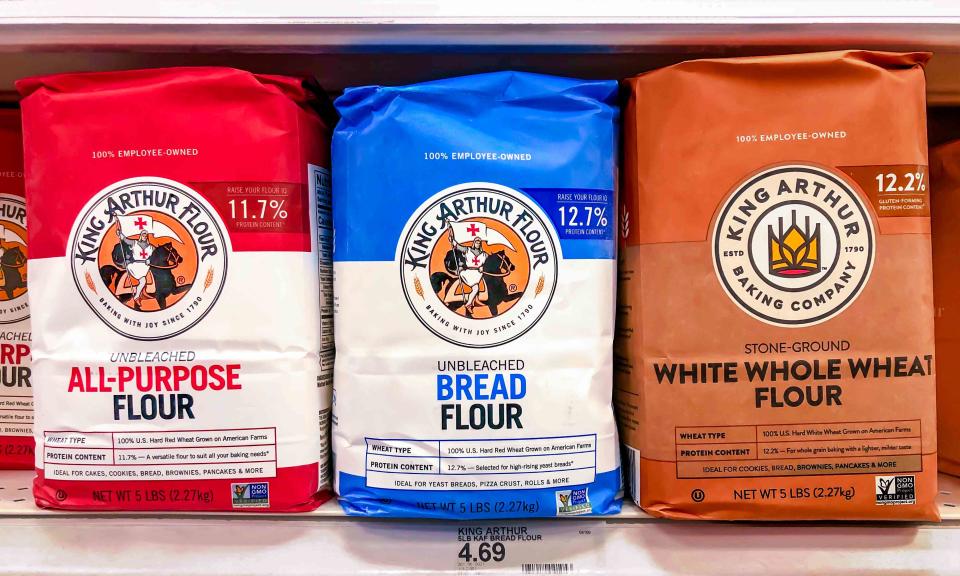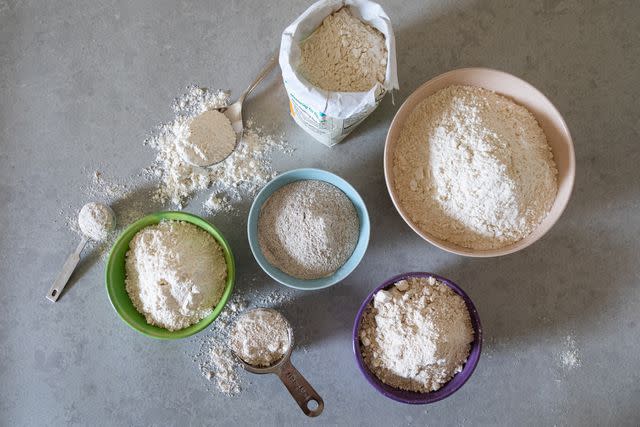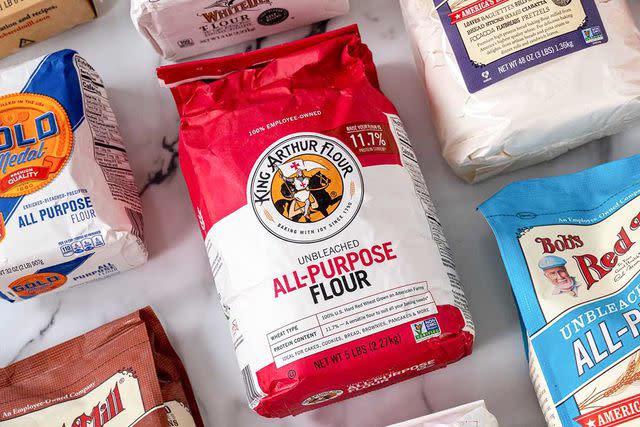This Is How Long Flour Actually Lasts, According to King Arthur Baking Company
I consulted an expert to find out how to extend my flour's shelf life.

Simply Recipes / Adobe Stock
As an avid home baker, I am familiar with how important it is to have the right ingredients on hand. Arguably, the key ingredient in just about any dessert is flour. After all, you can’t make brownies without all-purpose flour, almond shortbread without almond flour, or a crusty loaf of rye bread without rye flour.
When I buy a bag of flour, I rarely go through the whole bag as quickly as I plan to, and flour (of all sorts) has a shelf life. Ever opened up a bag of all-purpose to find some unwanted friends crawling inside? Or have you ever mixed almond flour into your batter before you realized it went rancid?
I certainly have, and because I don’t love the idea of leaving the house mid-bake to restock on ingredients, I consulted Melanie Wanders, Research & Development Specialist at King Arthur Baking Company, for the expert scoop on how long flour lasts and the best way to store it to lengthen its shelf life.

Simply Recipes / Lori Rice
How Long Does Flour Last?
How long your flour actually lasts depends on a lot of factors, including which nut or grain it’s made of, when it was made, and how it was stored. Therefore, it's difficult to provide a specific time range.
“Shelf life is very dependent on how recently the flour has been milled, when you bought it, and how it’s been stored prior to your purchase,” explains Wanders. The shelf life can be from three to four months to years, and how the flour is stored once it reaches your kitchen greatly affects how long it’ll last.
For any flour, the key is to first check the expiration date, says Wanders. If it’s past that date, even before it develops a funky smell or looks clumpy or moldy, the flour’s nuanced taste may weaken. The expired flour won't taste as good as fresh flour.
How To Store Flour To Lengthen Its Shelf Life
For longer-lasting flour, store it correctly.
"The paper bags that flour come in are made of breathable material that allows any remaining moisture from the milling process to evaporate, but they don’t protect [the flour] against things like permeating odors, moisture, or heat,” explains Wanders.
The best way to keep any flour safe from spoiling is to transfer it to an airtight container ASAP.
A Pro Tip From King Arthur Baking Company
If you transfer the flour into a separate container, label it with the best-by date as a reminder for when the flour expires.
Storage methods vary depending on the kind of flour you’re looking to stock your pantry with and how frequently you find yourself baking:
Refined Flour: White all-purpose, bread, cake, or self-rising flour should be stored in an airtight container in a cool, dark place in the short-term and the freezer for longer storage.
Unrefined Flour: Whole wheat or whole grain flours contain all parts of the wheat berry including the germ, making it susceptible to oxidation, a process that spoils the flour when exposed to oxygen over a prolonged period. Because oxidation can be sped up by exposure to light and heat, Wanders recommends storing these flours in the fridge or freezer after you transfer them into an airtight container.
Nut Flour: Nut flours have high oil content and therefore will oxidize and turn rancid more quickly; therefore, it should always be stored in the freezer.

Simply Recipes / Andy Christensen
How To Tell if Your Flour Has Gone Bad
Here are some tell-tale signs that it’s time to toss your flour:
Visual Cues: First, take a peek inside the container, if you see signs of insect activity, it's time to say bye. Another visual cue to look out for with white flour is “if the flour shows signs of mold or if it’s developed hard moisture lumps,” says Wanders.
Smell It: Give the flour a sniff. Wander says that white flours that smell “sour, musty, or rancid” should be tossed. These flours should have “a neutral scent with a faint ‘wheaty’ aroma.” For whole wheat and whole grain flour, it should not smell “rancid or play-doh like.” Finally, for nut flours, you’d mostly catch a whiff of acrid if it’s gone bad, like turned oil.
Read the original article on Simply Recipes.

 Yahoo News
Yahoo News 
